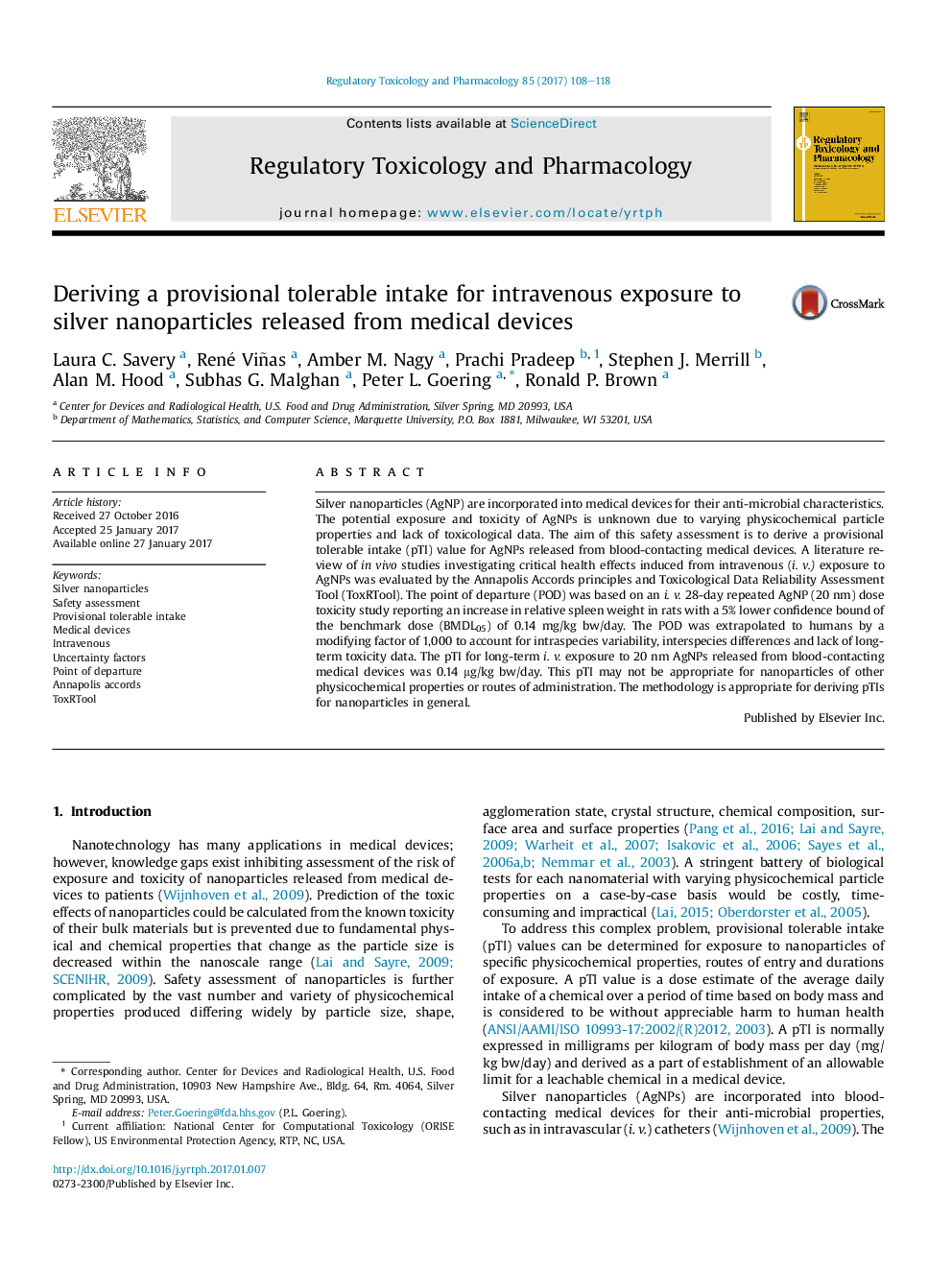| Article ID | Journal | Published Year | Pages | File Type |
|---|---|---|---|---|
| 5561382 | Regulatory Toxicology and Pharmacology | 2017 | 11 Pages |
•Provisional tolerable intake value was derived for intravenous exposure to nanoparticles released from medical devices.•Critical study selection was based on the Annapolis Accords principles and Toxicological Data Reliability Assessment Tool.•Modifying factor of 1,000 was determined by scientific review and analysis accounting for uncertainties.•Provisional tolerable intake for i. v. exposure to silver nanoparticles was calculated to be 0.14 µg/kg bw/day.•Methodology presented is appropriate for deriving provisional tolerable intake value for nanoparticles in general.
Silver nanoparticles (AgNP) are incorporated into medical devices for their anti-microbial characteristics. The potential exposure and toxicity of AgNPs is unknown due to varying physicochemical particle properties and lack of toxicological data. The aim of this safety assessment is to derive a provisional tolerable intake (pTI) value for AgNPs released from blood-contacting medical devices. A literature review of in vivo studies investigating critical health effects induced from intravenous (i. v.) exposure to AgNPs was evaluated by the Annapolis Accords principles and Toxicological Data Reliability Assessment Tool (ToxRTool). The point of departure (POD) was based on an i. v. 28-day repeated AgNP (20 nm) dose toxicity study reporting an increase in relative spleen weight in rats with a 5% lower confidence bound of the benchmark dose (BMDL05) of 0.14 mg/kg bw/day. The POD was extrapolated to humans by a modifying factor of 1,000 to account for intraspecies variability, interspecies differences and lack of long-term toxicity data. The pTI for long-term i. v. exposure to 20 nm AgNPs released from blood-contacting medical devices was 0.14 μg/kg bw/day. This pTI may not be appropriate for nanoparticles of other physicochemical properties or routes of administration. The methodology is appropriate for deriving pTIs for nanoparticles in general.
